Preparing mangoes
Peeling mangoes
METHOD 1

1 Cut a shallow cross in the mango, extending from the base to the stem end.

2 Place one end of the mango on the prongs of a fork. Grip the skin between your thumb and the flat of a knife and gently peel it away down the length of the mango. Repeat with the remaining sections of skin.
METHOD 2

1 Use a vegetable peeler (a ‘Y’ peeler is best) to remove the skin from the mango.
Slicing mangoes
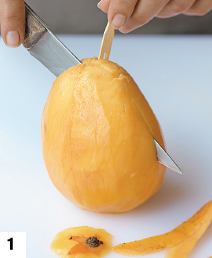
1 Trim the base of the peeled mango slightly and stand it upright. Use a sharp knife to cut the cheeks from either side of the mango and cut or slice as desired. (You can hold the mango with a corn-on-the-cob holder or fork to prevent it slipping.)
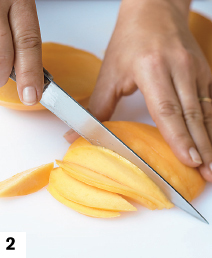
2 Place the mango cheeks on a board, cut side down, and cut into thin slices.
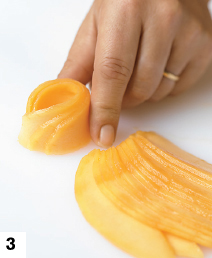
3 Either fan the mango slices or curl them together to decorate.
Dicing mango flesh
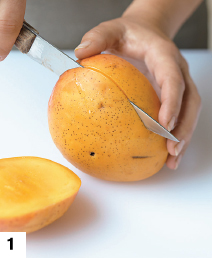
1 Use a small sharp knife to cut the unpeeled mango, starting at the stem end and slicing downwards on either side of the stone, as close to it as possible. These sides of flesh are often referred to as cheeks.
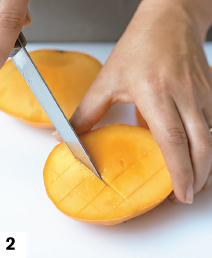
2 Use the knife to score the cheek flesh in a lattice pattern, cutting through the flesh but not the skin.
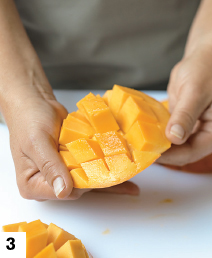
3 Holding the cheek in your hands with the flesh facing upwards, use your fingers to push the skin inside out so the cubes of flesh are pushed outwards.

4 Cut the narrow strips of flesh away from the stone, then slice off the skin and cut the flesh into cubes. Take the mango cheeks and cut the cubes of flesh from the skin. Remove the remaining flesh from the stone by cutting around it.
TIP It is hard to cut the flesh remaining on the stone into neat slices. Remove it from the stone, chop and reserve for another use, such as a purée.
If you are scoring the mango cheeks for grilling or pan-frying or turning them outwards to serve as part of a fruit platter, follow steps 1–3 only.